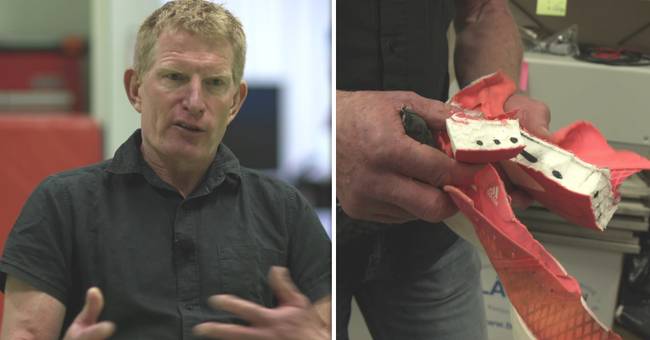At the beginning of the athletics summer, two world records were broken in the women's 10,000 meters within three days.
But it has not been the only super races this summer.
In the same vein, for example, Shelly-Ann Fraser-Pryce ran the fastest 100-meter race since Florence Griffith Joyner's world record in 1988.
The common denominator for these races: They ran in a shoe from the company Nike.
They have a revolutionary new technology with built-in carbon fiber plates that provide a leverage effect and thick soles that absorb energy.
This is one of the reasons why many records have been broken on the longest distances in recent years.
GIH professor leads working group
And there are those who think that technological development has gone too far.
Toni Arndt is one of them.
He is a professor at GIH, at the Department of Physiology, Nutrition and Biomechanics.
He is part of the working group that the International Athletics Federation has put together to investigate the new type of shoes, and leads the scientific part of the investigation.
- I think running is running.
You can run barefoot.
It was recently ... I think in Uganda, that someone ran barefoot and broke the national record of 5 km.
It is such runners who have actually run the best and fastest.
And why should someone who may not be as good be able to put on other shoes and be faster, he says.
Three things from the review "Sports' borderland":
Javascript is disabled
Javascript must be turned on to play video
Read more about browser support
The browser is not supported
SVT does not support playback in your browser.
We therefore recommend that you switch to another browser.
Read more about browser support
Three things from the review “Sports' borderland” Photo: SVT
Inadequate regulations
On road races, where marathons are run, for example, there is now a restriction that the shoes may be a maximum of 40 millimeters thick, and not have overlying carbon fiber soles.
On track runs, the shoes must be a maximum of 25 millimeters thick.
Otherwise, there are not many rules.
But Toni Arndt and his working group want to introduce stricter restrictions.
They have done tests to see what energy recovery the shoes provide, and they hope that this is what in the future will lay the foundation for which shoes should be allowed.
- It almost hurts a little too, because they are fantastic innovations.
It's great fun to have shoes that make you run faster.
It's so much fun.
It feels a little sad to say: “It does not work!
They must not run so fast ”.
But if it just keeps evolving, it's technical doping somehow.
FEATURES: The researcher: "It does not work"

